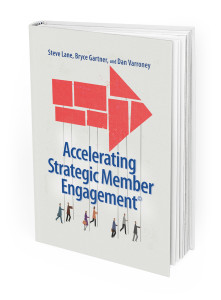Managing Teams Through Crisis
Every leader, whether it is in the Association world or any other work arena, must deal with their own version of “chin music.” Even Mike Tyson is right that “Everybody’s got plans, until they get hit.” Unexpected surprises come out of nowhere and sometimes even worse than expected circumstances land in the leader’s lap. Since Management and Board Members expect results, leaders know they must swing into action and get the job done.
Good leaders can find the pot of gold, even when there is no rainbow. New York Yankee Manager Joe Girardi for instance, looked to the 2013 season with optimism. Why shouldn’t he? A storied franchise with star power and a $200 million plus payroll helped him field a powerful team. Then thirteen players suffered injuries and landed on the disabled list. What many viewed as a nightmare scenario is instead an interesting case study on managing effectively, despite crisis.
With most of his team out for the foreseeable future, Girardi and the Yankees’ General Manager Brian Cashman collaborated on fielding a team of some veterans and many replacements. Fans who expected a team collapse and even Yankee haters might be scratching their heads. At least for now, the 2013 Yankees sit atop the American League’s highly competitive Eastern Division.
Rise Above It
The tough situations can define the most effective leaders. Joe Girardi’s leadership reminds executives that while a field of play can’t be changed, it can be managed. For Girardi and Managers in general, building on a solid foundation of trust is a sure winner.
6 Ways Managers Can Thrive During a Crisis
- Apply Constant Optimism – Pessimism is “poison for the soul.” Identify the opportunity for someone to step up and make great things happen.
- Offer Sincere Praise – Be specific, recognize what a team member achieved. It elevates morale and motivates others to step up and lead too.
- Preparation Really Matters – In tough situations, spend extra time developing strategies and options. Know the team’s capabilities, and how they fit into any given scenario.
- Consistency Plays Well – Leaders should be who they are in good times and bad times. Consistency displays reliability and it reinforces trust with the team.
- Clear Vision – Leaders must identify the path and deliver. Collaborate with superiors, mentors and colleagues as they could provide an idea a leader had not thought of.
- The Golden Rule – Successful Leaders almost always had great Managers and Coaches. Many remember how words of encouragement and coaching sessions lifted morale. Lifting people up works. Leaders who take credit and blame others decimate morale and performance.
Managing Teams Through Crisis
With more than one half of the Major League Baseball Season yet to be played, it’s tough to know how the New York Yankees will finish the season. What’s been accomplished thus far is a teachable moment for Managers. Even the toughest of challenges can be overcome. Using similar approaches, one Association executive, after losing a top sales performer, turned their year end into a success from almost certain failure.
Do optimism, praise, preparation, consistency, clear vision and the golden rule by themselves assure success? No, but they offer a solid framework for any Manager to utilize when the worst happens. “It ain’t over till it’s over” said Yogi Berra, and now with 6 strategies built on a foundation of trust, leaders could have the capacity to snatch victory from the jaws of defeat.
For a free copy of the “Accelerating Strategic Member Engagement” eBook, request your copy at www.potomaccore.com.





